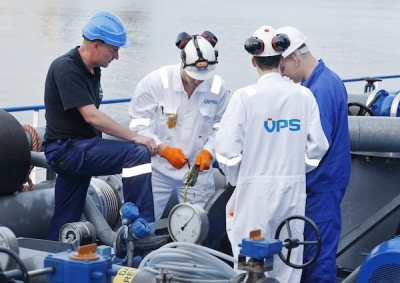Bunkering in the Americas – getting it right

“I don’t like crude oil because it’s so vulgar.” I heard those words on an oil trading floor one day. Must have been a trader on the wrong side of a deal. And shipowners may echo that sentiment once again in the not too distant future.
In early 2016 crude oil made its way below $30 per barrel with all other products following suit. Ship owners felt some relief with IFO-380 trading near the $100 per MT mark in some ports. Their single largest expense had been downsized. But in just a few short months the trend had reversed. Crude has now eclipsed $50 again and bunkers have jumped the $250 mark. Marine Gas Oil is well over $400 and ship owners need to buy more and more of the distillates and hybrid fuels in order to meet tight ECA restrictions. It is probably time to revise those bunker budgets again. And what better time than now to focus in on ways to control and optimize your fuel costs.
Over the years, more and more shipowners and charterers are managing their fuel budget via Bunker Quantity Surveys. The benefits span across all global ports and the Americas region is no exception. Over the last 17 months, Veritas Petroleum Services has uncovered 221 instances in the Americas alone where the difference between the receiving vessel and the Bunker Delivery Note was more than 1.0%. Forty four of those cases involved shortages of more than 20 metric tons. That could amount to $6,000 on one bunker delivery and what shipowner or charterer would not want that money back in their P&L? But do not assume that all of these supposed “shortages” are due to unscrupulous bunker suppliers. There can also be shortcomings on board your ship worth investigating.
This brings to mind a case I investigated years ago. A vessel was bunkering in the same port on a repeat basis. The Chief Engineer started reporting a shortage every week after bunkering. The amount of the shortage was approximately 18 metric tons every week. The supplier and owner bickered about the shortage every week. Investigations were conducted every week and both parties spent extra time every week calculating and re-calculating delivery figures. Office staff and field staff were spending too much time dealing with the situation.
Eventually a third party bunker surveyor was brought in for a job. During the survey, he was able to pinpoint one bunker storage tank on board the receiving vessel that registered the 18 ton difference. The tank was difficult to gauge manually, therefore the ship staff always relied on built in automation for the readings. Only through manual gauge by the surveyor was the root cause discovered. Three months later the vessel went to her scheduled dry dock. The superintendent had the suspect bunker tank checked and found that a sensor in the bottom of the tank was malfunctioning. Once the sensor was replaced, the shortages disappeared.
Panama is one of the largest and most unique bunkering ports in the Americas. Owners and charterers often take advantage of the idle time waiting for transit. Good time to bunker the vessel especially considering the competitive prices in the canal. But no vessel wants to be delayed when it is her time to transit or, even worse, miss her transit due to a bunker job not completed in a timely manner. There have been some barge operators / suppliers that intentionally slow down the pump rate in order to drag out the delivery time. Somehow the pump rate increases as the vessel’s transit time draws near and the bunker job finishes just in the nick of time.
But there is not time to gauge all the tanks at the end and there isn’t time to discuss the 20 metric ton shortage. The captain orders the Bunker Delivery Note to be signed pronto so that the vessel can make her transit. An experienced and knowledgeable bunker surveyor sees this happen real time and can call attention to the situation. An agreed safe pumping rate must not be exceeded, however, a reduced, slow pumping rate will drag the job out unnecessarily leaving ship staff insufficient time to investigate or challenge a shortage. A trusted surveyor can not only find shortages but also spot slowing pump rates and notify the Chief while action can still be taken.
Although some think that the Mass Flow Meter is a panacea for shortages, do not be so sure. Mass Flow Meters can be incredibly accurate when operated correctly by a reliable supplier. But there are also cases where barges with Mass Flow Meters still come up short against ship figures. In South America, there is one area where Mass Flow Meters are used but the area still registers shortages at higher than average rates. Would you like to know where this occurs?
Ask your trusted bunker surveyor…
HEADLINES
- Do shipping markets want Biden or Trump for the win?
- All 18 crew safe after fire on Japanese-owned tanker off Singapore
- Singapore launching $44m co-investment initiative for maritime tech start-ups
- Cosco debuts Global Shipping Industry Chain Cooperation Initiative
- US warns of more shipping sanctions
- China continues seaport consolidation as Dalian offer goes unconditional